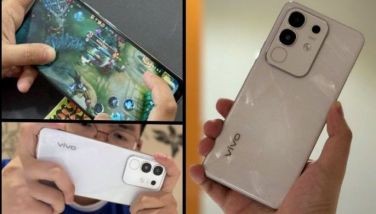Wave away crime

On Nov. 15, 1986, past 3 p.m., a Japanese businessman, Mitsui & Co. executive Noboyuki Wakaoji, 53, was kidnapped by several armed men riding in two luxury cars. He was going home after playing golf with fellow executives in Canlubang Country Club. Wakaoji was driven south to Talisay, Batangas and held captive for 137 days.
A $3-million ransom was demanded by the kidnappers, numbering at least a dozen. Handcuffed 24/7 for 137 days, emaciated and his right middle finger cut off, Wakaoji was freed and returned home to Tokyo on April Fool’s Day 1987, welcomed by his shocked and angry countrymen.
The $3-million ransom was paid. After the incident, the Japanese lost interest in investing in and travelling to the Philippines, portrayed, according to The Washington Post then, “as a zone of violence and disorder.”
“I hate kidnappers,” said Wakaoji in 1987.
Wakaoji’s kidnapping came two days after president Corazon C. Aquino made a successful visit to Japan to sell the Philippines as an investment destination, its democracy having been fully “restored.” On the day Cory returned to Manila, the mutilated body of a prominent labor leader, Rolando Olalia, along with his driver, was discovered.
The two incidents were made to appear there was a rising crime wave under the new Aquino government, on top of active destabilization moves by the Reform the Armed Forces Movement.
Later, I learned from my military sources that RAM had something to do with the two celebrated incidents. The idea: to destabilize and overthrow the Aquino government portrayed as a weakling and incompetent. Cory served her full term of six years plus four months bonus. She was hobbled, however, by nine debilitating coup attempts, including the two most bloody in our history, the 1987 and 1989 coups.
I am reminded of the Wakaoji kidnapping and the Olalia killing because of major kidnapping incidents this year. Plus that incident of eight Eastern Police District policemen entering the house of an alleged suspect, robbing it of P85 million in cash and valuables, and kidnapping its Chinese owner. Three high profile kidnappings in three months, each grabbing headlines and tv prime time.
While one swallow does not a summer make, three or four kidnappings, all involving Chinese victims, could, indeed, make for a nascent crime wave, in the eyes of Chinese Filipinos.
Unless President Marcos Jr. gets on top of the situation, start shooting orders, make the police responsible so that they do a thorough investigation, arrest the suspects, charge them or, better yet, shoot them while trying to escape (or “nanlaban”), the three kidnappings could be the start of something ominous.
Like destabilization? What Harry Roque’s polvoron video failed to do, could kidnappings do it?
Two groups immediately come to mind – criminal syndicates and powerful forces embedded in the innards of government.
In police parlance, kidnapping is called serious illegal detention, which is deprivation of a victim’s liberty. And proof of kidnapping, according to the Supreme Court in the 1999 Wakaoji case (yes, the kidnappers were apprehended, charged and after 13 years, found guilty) is “actual confinement or restriction of the person of the offended party.”
By the way, newspaper reports of kidnapping, when introduced as evidence in court, are considered by the Supreme Court as “incompetent and hearsay.” One of the accused in the Wakaoji case was not convicted – because he died while in detention.
The penalty for kidnapping is reclusion perpetua (life sentence), plus refund of the ransom paid. Demanding ransom is also known as extortion. When certain parts of the victim’s body is defaced, deformed or removed, it’s called mutilation. For kidnappers, it’s called proof of life, while awaiting payment of ransom. But I am digressing.
Kidnap victim Congyuan Guo, alias Anson Tan (alias Anson Que) was last seen alive on March 29, 2025 leaving his Bulacan office with his driver. He was reported missing by his family the following day, March 30. A $20-million ransom was asked. Ransom was paid, but a much smaller amount. On April 8, Guo’s body and that of his driver, Armanie Pabillo, were recovered in Rodriguez, Rizal.
February this year, a 14-year-old student of the British School in Taguig was kidnapped. His driver was killed. After a week and payment of ransom, in dollars, at a discount from the original $20 million, the boy was freed, one finger cut off.
The Guo (Que) and the boy’s kidnappings are claimed to be the work of criminal syndicates – remnants of Philippine offshore gaming operations (POGOs) banned last year by President Marcos.
In Guo’s case, I was told his kidnappers were actually demanding, not a ransom, but refund the money they advanced for a POGO facility or building project that fizzled out. Guo (Que) refused to refund.
Accordingly, in true mafia fashion (“Let’s teach him a lesson”), he was kidnapped and killed, but not after being tortured and made to suffer.
Meanwhile, the Department of Justice on April 10 found probable cause to charge the eight EPD Special Operations Unit policemen with kidnapping and robbery for the P85-million heist in the house of a Chinese businessman in Las Piñas City last April 2. The officers served a bogus warrant on the victim, entered his house, forcibly opened the vaults and looted P85 million in cash (pesos, dollars and Malaysian money), jewelry, gadgets and other personal belongings.
The Philippine National Police said Thursday newly promoted police Brigadier General Elmer Ragay has been removed from his post as chief of the PNP Anti-Kidnapping Group.
Early June last year, four policemen, including a police major, assigned in Metro Manila were arrested for kidnapping for ransom three Chinese tourists and a Malaysian, the victims pulled out from their car, on a busy road, shoved into a van, in full view of witnesses.
* * *
Email: biznewsasia@gmail.com
- Latest
- Trending
























